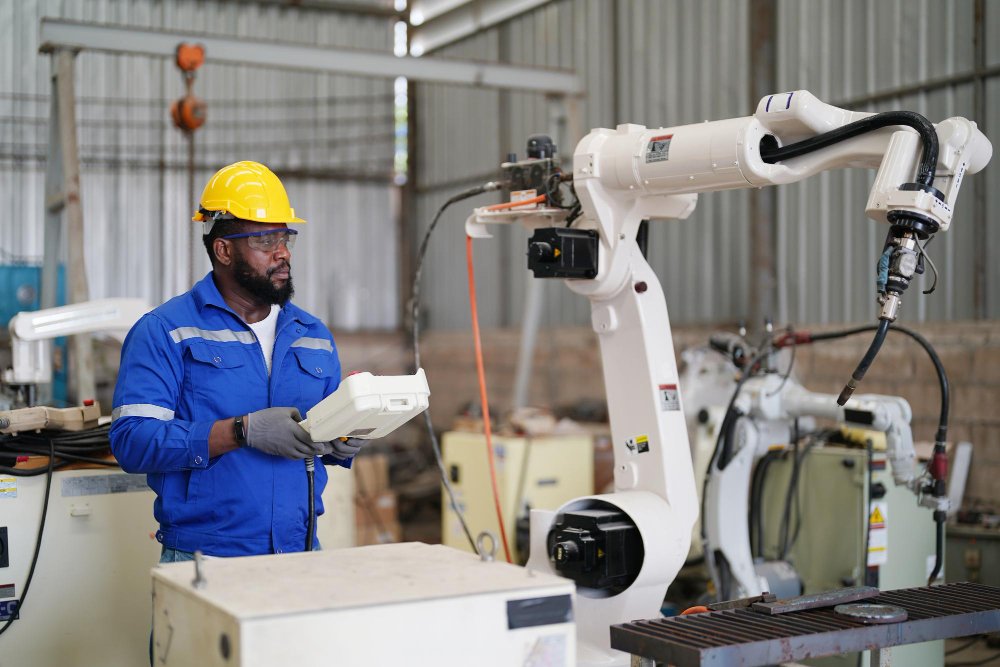
India’s manufacturing sector is steadily gaining traction among global investors, with S&P Global highlighting the country’s growing appeal amid a changing global trade order. In a report titled “India Forward: Transformative Perspectives,” the global ratings agency asserts that India is all set to strengthen its position in global manufacturing by capitalising on supply-chain diversification, trade realignments, and competitiveness reforms.
“India has made notable progress in enhancing its competitiveness and making its manufacturing sector more attractive to global investors,” said S&P. “As economies adapt to evolving trade dynamics and tariff challenges, India can capitalise on this momentum for accelerated manufacturing growth and greater global supply-chain integration.”
This positive outlook comes at a time when major economies are reassessing their supply chains in response to geopolitical tensions and trade policy shifts.
Despite facing higher tariffs on exports to the U.S., its largest export partner, India’s moderate reliance on external trade offers some insulation from global shocks. However, private investment remains susceptible to the ripple effects of policy uncertainty.
S&P analysts believe that heightened protectionism globally could ironically work in India’s favour. “The threat of higher U.S. tariffs on exports from Asian economies like China, Vietnam, and Thailand can be leveraged to India’s advantage to capture a greater share in global manufacturing exports,” the report stated.
While the potential is vast, challenges persist. Manufacturing value-added in India remains at 17.2% of GDP, well below the government’s aspirational target of 25%. Moreover, the sector’s contribution to GDP has slightly declined over the past few years, falling from 16.8% in FY18 to 15.7% in FY25 (as per the second advance estimate).
In high-potential sectors like electronics and smartphones, India has made significant headway. Yet, the limited domestic value addition and stagnation in labour-intensive industries signal that much work remains to achieve broad-based manufacturing excellence.
S&P’s report also remarked that while India’s global share of service exports has grown from 2.9% in 2014 to 4.3% in 2024, its manufacturing export share remains modest at just 1.8%. This disparity underscores the need for deeper structural reforms and increased investments in manufacturing ecosystems.
The report suggests that India must focus on local sourcing, regional integration, and proximity to end-markets. Such strategic realignments, combined with investments in technology and skilled labour, could significantly enhance India’s manufacturing competitiveness.
Additionally, after a post-pandemic peak, India’s share in global FDI inflows has dropped from 6.5% in FY21 to 2.1% in FY24. Reversing this trend is critical for sustainable growth and job creation in the manufacturing sector.
Looking forward, India’s economy is expected to grow at a rate of 6.5% in FY25, with forecasts for FY26 ranging between 6.3% and 6.5%. Although this is slower than the 9.2% growth recorded in FY24, India retains its title as the world’s fastest-growing large economy.
As the global industrial map is redrawn, India finds itself at a crucial moment. With favourable demographic dynamics, policy initiatives like Make in India and PLI schemes, and an increasingly investor-friendly environment, India is gradually transforming from a back-office hub to a global manufacturing powerhouse.
The road ahead may be riddled with complexities, but S&P’s assessment reinforces the belief that India, if it sustains its current trajectory, could not only achieve its manufacturing targets but also emerge as a critical pillar of global industrial growth by 2030.